- Home
- Anthony Ryan
The Waking Fire
The Waking Fire Read online
ACE BOOKS BY ANTHONY RYAN
THE RAVEN’S SHADOW NOVELS
Blood Song
Tower Lord
Queen of Fire
THE DRACONIS MEMORIA
The Waking Fire
An imprint of Penguin Random House LLC
375 Hudson Street, New York, New York 10014
This book is an original publication of Penguin Random House LLC.
Copyright © 2016 by Anthony Ryan.
Penguin supports copyright. Copyright fuels creativity, encourages diverse voices, promotes free speech, and creates a vibrant culture. Thank you for buying an authorized edition of this book and for complying with copyright laws by not reproducing, scanning, or distributing any part of it in any form without permission. You are supporting writers and allowing Penguin to continue to publish books for every reader.
ACE® is a registered trademark of Penguin Random House LLC.
The “A” design is a trademark of Penguin Random House LLC.
For more information, visit penguin.com.
eBook ISBN: 9781101987865
Library of Congress Cataloging-in-Publication Data
Names: Ryan, Anthony, author.
Title: The waking fire / Anthony Ryan.
Description: New York, NY : Ace Books, 2016. | Series: The Draconis memoria ; 1
Identifiers: LCCN 2015039369 | ISBN 9781101987858 (hardcover)
Subjects: | BISAC: FICTION / Fantasy / Epic. | FICTION / Fantasy / General. | GSAFD: Fantasy fiction.
Classification: LCC PR6118.Y3523 W35 2016 | DDC 823/.92—dc23 LC record available at http://lccn.loc.gov/2015039369
FIRST EDITION: July 2016
Jacket illustration © Larry Rostant.
Jacket photographs: old compass rose © nicoolay/iStockphoto; old paper © siro46/Shutterstock; lace trim © antipathique/Shutterstock; Machine Durand and Marais engraving © Morphart Creation / Shutterstock; Latching Bourdin engraving © Morphart Creation / Shutterstock; fire frame © Alexander Chernyakov / iStockphoto; smoke © Honchar Roman / Shutterstock; vintage frame © bomg/Shutterstock.
Jacket design by Judith Lagerman.
Jacket and interior maps by Anthony Ryan.
This is a work of fiction. Names, characters, places, and incidents either are the product of the author’s imagination or are used fictitiously, and any resemblance to actual persons, living or dead, business establishments, events, or locales is entirely coincidental.
Version_1
For Paul, because sometimes the only reward for fighting the good fight is in knowing you did it.
ACKNOWLEDGEMENTS
Many thanks to my excellent editor at Ace, Jessica Wade, for her keen insight and greatly welcome input. Additional thanks and long-lasting gratitude to my former editor, Susan Allison, who first took a chance on me and kept the faith when the first draft of The Waking Fire landed on her desk not long before she took well-deserved retirement. Also, deep appreciation to my UK editor, James Long, and my agent, Paul Lucas, for their continued support and hard work. And finally, once again heartfelt thanks to my long-suffering second set of eyes, Paul Field, who still won’t let me pay him.
CONTENTS
ACE BOOKS BY ANTHONY RYAN
TITLE PAGE
COPYRIGHT
DEDICATION
ACKNOWLEDGEMENTS
MAPS
PROLOGUE
PART I: THE RED SANDS CHAPTER 1: Lizanne
CHAPTER 2: Clay
CHAPTER 3: Hilemore
CHAPTER 4: Lizanne
CHAPTER 5: Clay
CHAPTER 6: Lizanne
CHAPTER 7: Clay
CHAPTER 8: Lizanne
CHAPTER 9: Hilemore
CHAPTER 10: Clay
CHAPTER 11: Lizanne
CHAPTER 12: Clay
CHAPTER 13: Hilemore
CHAPTER 14: Lizanne
CHAPTER 15: Clay
CHAPTER 16: Lizanne
CHAPTER 17: Hilemore
CHAPTER 18: Clay
PART II: ALIGNMENTS AND ANOMALIES CHAPTER 19: Lizanne
CHAPTER 20: Clay
CHAPTER 21: Hilemore
CHAPTER 22: Lizanne
CHAPTER 23: Clay
CHAPTER 24: Hilemore
CHAPTER 25: Lizanne
CHAPTER 26: Clay
CHAPTER 27: Hilemore
CHAPTER 28: Lizanne
CHAPTER 29: Clay
CHAPTER 30: Hilemore
CHAPTER 31: Lizanne
CHAPTER 32: Clay
PART III: THE BLESSED AND THE DAMNED CHAPTER 33: Hilemore
CHAPTER 34: Lizanne
CHAPTER 35: Clay
CHAPTER 36: Lizanne
CHAPTER 37: Clay
CHAPTER 38: Lizanne
CHAPTER 39: Clay
CHAPTER 40: Lizanne
CHAPTER 41: Clay
CHAPTER 42: Lizanne
CHAPTER 43: Clay
CHAPTER 44: Lizanne
CHAPTER 45: Clay
CHAPTER 46: Lizanne
CHAPTER 47: Hilemore
DRAMATIS PERSONAE
PROLOGUE
REPORT TO: BOARD OF DIRECTORS
IRONSHIP TRADING SYNDICATE
HOME OFFICE
FEROS HOLDINGS
Report by: Lodima Bondersil—Acting Director, Carvenport Division, Arradsian Continental Holdings
Date: Settemer 29, 1578 (Day 166 of Company Year 135 by the Corporate Calendar)
Subject: Events surrounding the demise of Mr. Havelic Dunmorn, Director Carvenport Division, Arradsian Continental Holdings
Esteemed Sirs and Ladies,
By the time this report reaches your hands you will, no doubt, have received word via the Blue-trance of the demise of my immediate superior, Mr. Havelic Dunmorn, and an initial estimate of the associated deaths and considerable material destruction accompanying that tragic event. I have compiled this written account in the hope and expectation it will obviate any asinine and ill-informed rumours spread by competitors or Syndicate employees (see addendum for a list of recommended dismissals and contract terminations). It is my intention to provide a clear and unbiased account of events so as to better inform the deliberations of the Board and any subsequent directives they may see fit to issue.
The incident in question took place in and around the Harvesting and Dockside quarters of Carvenport on Settemer 26. The Board will recall Mr. Dunmorn’s Blue-trance communication on 12 Dimester which described the successful capture of a wild Black by the Chainmasters Independent Contractor Company, following a lengthy expedition to the south-western regions of the Arradsian Interior. I also refer the Board to the previous ten quarterly written reports from this Division concerning the increasing attrition rate amongst pen-bred stock, with Blacks proving the most short-lived of all breeds. I am sure the Board requires no reminder of the ever-decreasing potency of product harvested from inbred and youthful stock. Therefore, the capture of a live and healthy wild Black (the first such capture in more than a dozen years) was greeted with considerable excitement throughout the ranks of Syndicate employees, in that it offered the prospect of thickened blood lines and quality product for years to come. Unfortunately such expectations were soon revealed as premature.
The Black, a full-grown male of some sixteen feet in length, proved extremely difficult to handle, perennially unsettled and p
rone to dangerous lunges even when sedated and its jaws firmly muzzled. Several harvesters were injured in wrangling the beast and one maimed when it contrived to crush him against the walls of its pen after feigning somnolence for several hours. The cunning of the various breeds inhabiting these lands has oft been remarked upon by harvesters and naturalists alike, but I must confess to a considerable personal discomfort at the vicious calculation displayed by this particular animal, traits so far unseen in all my years on this continent.
In addition to its frequent violence the Black also refused to mate with any pen-bred female, reacting with either indifference or aggression whenever one was placed in its proximity. Added to this was the extreme reluctance on the part of the female Blacks to remain anywhere near their wild cousin, all becoming excessively agitated and vocal at the mere sight of him. So after four months, with no prospect of a successful mating and costs of feeding and caring for the specimen increasing, Mr. Dunmorn ordered the beast be harvested. I have attached minutes of my discussion with Mr. Dunmorn which are fulsome in their description of my opinion on the matter and require no repetition here.
Mr. Dunmorn determined to make a celebration of the harvesting, a sop to local morale which has suffered recently due to the dip in markets and consequent reduction in contract terms. It was decreed, therefore, that the harvesting would take place on the same day as the Blood-lot, not often regarded as a day of merriment elsewhere but in these far-removed lands has become something of an annual festival. The prospect of a child finding themselves elevated to a life of prosperity by mere chance holds considerable resonance for those who often find their own ambitions curbed by the reality of individual ability.
To add to the festivities, Mr. Dunmore intended to retain one fiftieth of the harvested product for distribution to the populace by means of a raffle. Given the current market price for undiluted Black, I am certain the Board will recognise the popularity of this contrivance, the principal reason why the area surrounding the harvesting vat was so crowded at the decisive moment.
PERSONAL NARRATIVE
I remain hopeful of the Board’s understanding in reporting my failure to establish the precise chain of events leading to the ultimate calamity, a task that remains unfulfilled despite my exhaustive efforts. Many first-hand witnesses are now sadly consigned to the grave and those remaining amongst the living are often unreasoned to the point of lunacy. Exposure to undiluted product can have unpredictable consequences. As for my own account, I was not present for either the Blood-lot or the harvesting, having opted to remain at the Academy to address a large glut of unresolved correspondence.
At approximately twenty minutes past the fourteenth hour I was drawn from my labours by the tumult of screams from beyond the window. On going to investigate I was struck by the sight of numerous townsfolk running through the streets with considerable, nay panicked alacrity, many a shocked, pale or weeping face amongst the throng. Spying one of my students amidst the mob I opened the window and called her name. A bright and resourceful child, as my girls invariably are, she managed to extricate herself from the rush by means of clambering up the academy railings, clinging on as she made her report: “It’s loose, Madame! The Black is loose in the town! Many are dead!”
I must confess to a shameful loss of decision at this point, for which I naturally crave the Board’s pardon. However, I trust you will recognise that this particular circumstance had never, at any point, occurred during the entirety of my three decades on this continent. After an inexcusable delay of several seconds I was finally of sufficient mind to formulate a question for my student. “How?”
At this point the girl’s countenance took on an uncharacteristic confusion and it was a full half-minute before she spoke again, her words halting and imprecise. “The Blood-lot . . . There was a woman . . . A woman with a child . . .”
“It is customary for parents and children to gather at the Blood-lot,” I told her, not without some impatience. “Clarify your report!”
“She . . .” My student’s face then took on an expression of equal parts wonder and horror. “She jumped.”
“Jumped?”
“Yes, Madame. With the child . . . She gathered up the child and . . . jumped.”
“Jumped where?”
“Into the vat, Madame. Just as the harvester tapped the Black . . . She jumped into the vat.”
From the blank mystification on my student’s face, and the copious scorching and bloodstains besmirching her dress, I divined she would be unable to furnish further useful intelligence. Having ordered her to proceed to the dormitory and see to the security of the younger students, I recovered a full set of vials from my office safe and made haste towards the Harvesting quarter. I will not burden the Board with a full description of the destruction I witnessed during the journey, nor what I found on reaching the site of the Black’s harvesting, or pause to enumerate the number of corpses, but suffice to say I saw enough to confirm the veracity of my student’s account.
The vat itself was completely shattered, the solid oak planking blown to splinters and scattered in a wide radius, as was the beast’s blood. It lay in thick pools on the cobbled street, or spattered onto surrounding houses where all windows had been flung open to witness Mr. Dunmorn’s spectacle. Those spectators not killed outright by ingestion were stumbling about or flailing on the ground, either in madness or agony. Being resistant to the blood’s effects I was able to approach the remnants of the vat, observing the body of a woman half-submerged where the blood lay thickest. Her age and identity were unguessable as her skin had been blackened and charred from direct contact with the product, but from her slender proportions I judged her as young. The only sign of the Black was the shattered remnants of its chains. As for the child my student spoke of, I saw no trace at all.
A flurry of rifle-shots drew my attention towards the dockside, easily viewed from my present vantage point via the path of destruction carved through successive rows of housing. Amidst the sound of gun-fire a distinctive roaring could also be discerned. At this point I felt it opportune to imbibe a goodly portion of Green which facilitated a rapid approach to the docks whereupon I first spied the unleashed beast. It had smashed its way to the wharf, trailing blood from the tap in its neck with every step but, despite its loss, continued to wreak havoc with furious energy. I watched as it dashed the Harbour-Master’s house to pieces with successive swipes of its tail before turning its attention to the vessels moored alongside the quay. A number were in the process of drawing off, the crews working with feverish industry to seek the sanctuary of the open sea, but a half-dozen evidently lacked the hands or decisiveness to effect escape.
The Black leapt atop a sturdy coastal steamer, the IRV Equitable Share, submerging it by virtue of its weight alone, unmuzzled jaws snapping at the flailing crewmen in the water. Turning its attentions to a neighbouring freighter, a Briteshore Minerals vessel of some two hundred tons displacement, it set about wrecking the wheel-house and stacks, all the time gaping its mouth as it sought vainly to bring forth its fire. I must pause at this point to emphasise the wise foresight of the harvesters who first took charge of the beast in severing its naphtha-ducts. Had they not the consequences are frankly too appalling to contemplate.
At this point I saw the Black rear in shock as a rifle round struck its flank, voicing a great roar of fury before launching itself at the next vessel on the quay, the cauterised stumps of its wings twitching as it instinctively sought the air. I soon identified the source of the rifle-shot, spying a figure atop one of the taller, as yet undamaged, cranes crowding the wharf. Thanks to the effects of the recently imbibed Green I scaled the crane’s scaffold in a matter of seconds, finding a man perched on the armature and taking careful aim at the Black with a longrifle. He fired and I saw the Black rear again, before bounding onward, landing on the broad deck of the IRV Drakespite, a Blue-hunter recently returned from the southern seas. The crew ha
d unwisely chosen to contest the beast’s assault, assailing it with various fire-arms, none of sufficient calibre to inflict more than a minor wound.
The rifleman swore in copious and uncouth terms as he reloaded his weapon, falling silent as I strode along the armature to his side. “Y’pardon, ma’am,” he said in the accent of the Old Colonials, his origins also plain in the dark hue of his complexion. Having scant time to deliver a lecture on propriety, I took note of his worn but hardy clothing before settling my gaze on his longrifle: a Vactor-Massin .6 single-shot breech-loader favoured by the more successful Contractor Companies.
“Personal weapons are required to be lodged with the Protectorate on entry to Carvenport, sir,” I said.
The marksman gave the barest grin in response before nodding at the still-rampaging beast. “Reckon I’ll earn myself a pardon when I put him down, ma’am. If only he’d cease his fury long enough for a skull shot.”
I watched as the Black’s tail swept the last remaining crew from the deck of the Drakespite whereupon it threw its head back to voice a victory roar, the blood continuing to flow from the steel spile in its neck. “A good sight more lively than it should be,” the Contractor opined, taking aim once more then biting down on a curse as the beast bounded on. “All that blood leaked away.”
“Your name, sir?” I enquired.
“Torcreek, ma’am. Braddon Torcreek, fifth-share hand to the Longrifles Independent.”
I took the vials of Red and Black from my supply and drank it all before taking another deep draught of Green. “I’ll hold him for you, Mr. Torcreek,” I said. “See if we can’t earn you that pardon.”
With that I leapt over the marksman and sprinted the length of the armature, launching myself at a tilted mast arising from the deck of a listing freighter, one of the older ships which continue to retain sails as insurance against engine failure. The distance was perhaps thirty feet or more, well within reach of a Blood-blessed sated by Green. I caught hold of the rigging and used the resultant centrifugal forces to propel me in pursuit of the Black, a basic manoeuvre I had been teaching my girls for the better part of two decades. Arcing towards the Black at considerable velocity I called upon my reserves of Red to assail it from the rear. Naturally its hide was scorched but largely undamaged by the resulting blast of heat, but like all its kind, it proved incapable of ignoring a challenge.

 Raven’s Shadow Book One: Blood Song (Raven's Shadow)
Raven’s Shadow Book One: Blood Song (Raven's Shadow)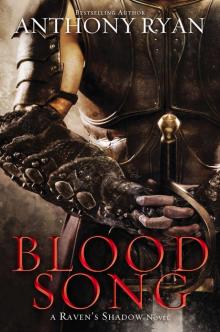 Blood Song
Blood Song Queen of Fire
Queen of Fire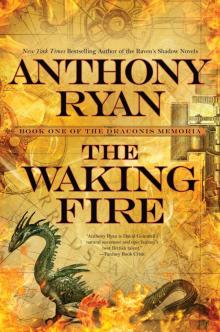 The Waking Fire
The Waking Fire The Legion of Flame
The Legion of Flame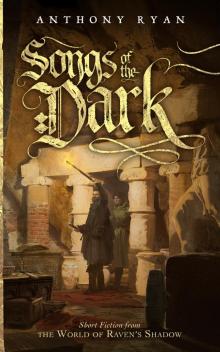 Songs of the Dark
Songs of the Dark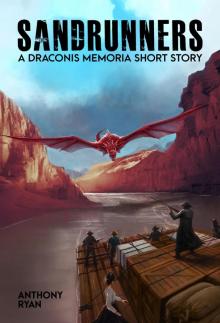 Sandrunners--A Draconis Memoria Short Story
Sandrunners--A Draconis Memoria Short Story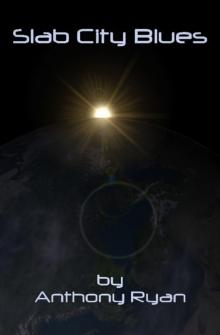 Slab City Blues
Slab City Blues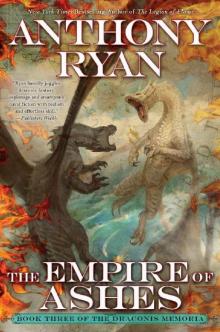 The Empire of Ashes
The Empire of Ashes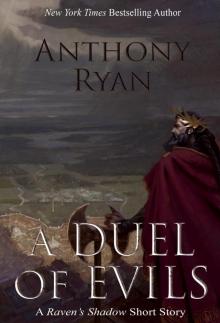 A Duel of Evils
A Duel of Evils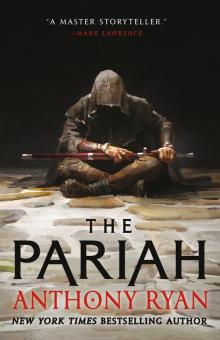 The Pariah
The Pariah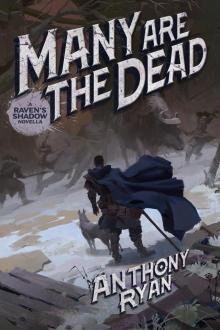 Many Are the Dead
Many Are the Dead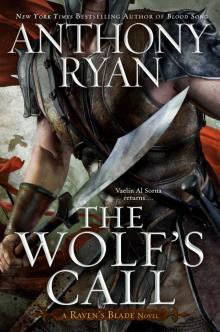 The Wolf's Call
The Wolf's Call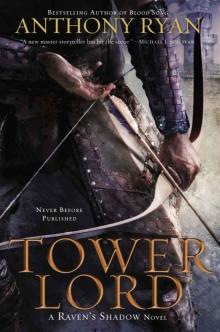 Tower Lord (A Raven's Shadow Novel)
Tower Lord (A Raven's Shadow Novel)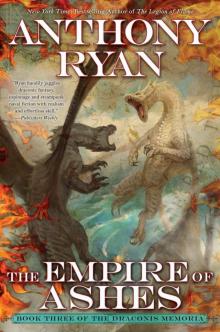 The Empire of Ashes (The Draconis Memoria)
The Empire of Ashes (The Draconis Memoria)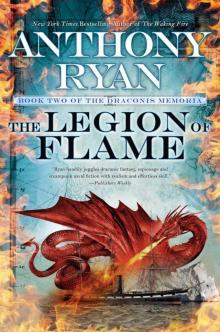 The Legion of Flame (The Draconis Memoria)
The Legion of Flame (The Draconis Memoria)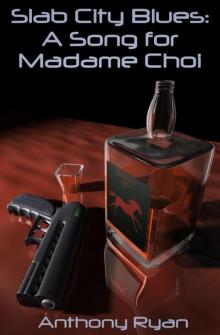 Slab City Blues: A Song for Madame Choi
Slab City Blues: A Song for Madame Choi